Simple, Elegant Costumes, Adornments Add Beauty to Bouyei People
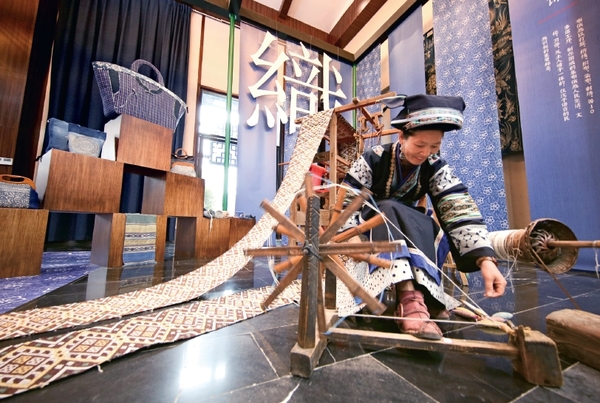
The Bouyei ethnic group mainly inhabits southwest China's Guizhou, Yunnan and Sichuan provinces. With true-to-life patterns of landscapes, flowers, birds, fish and other animals, simple, elegant costumes and adornments add beauty to the Bouyei people. In 2014, China added the Bouyei people's costumes and adornments to the list of the country's items of intangible cultural heritage.
Bouyei men and women like to wear blue, cyan, black and white-colored clothes. Young and middle-aged men usually wear turbans in blue, black or white color. Many Bouyei people wear long or short breasted shirts, with buttons to the right. Their trousers are straight, with large crotches. The people usually wear leather or cloth shoes.

Bouyei women usually wear short tops with big skirts or long pants. The lapels, cuffs, and trouser legs are inlaid with laces. The women also wear turquoise, white or plaid headscarves on their heads, along with silver bracelets, earrings and other accessories. The women usually wear pointed, embroidered shoes.
The traditional costumes of the Bouyei people vary in different regions. In some regions, Bouyei women wear short tops, with large lapels and pleated skirts. Necklines, shoulders, and sleeves are inlaid with laces. Many of the women wear batik skirts, with blue flowers on the white background. Black belts, with laces, are often tied around their waists. Some elderly Bouyei women have held to the tradition of wrapping blue cloth around their heads, and wearing short, collarless loose blouses, with embroidered laces and pipings in the seams and lower corners. Most of the elderly Bouyei women wear blue-and-black pleated skirts. Some of the elderly women wear embroidered aprons and/or shoes.
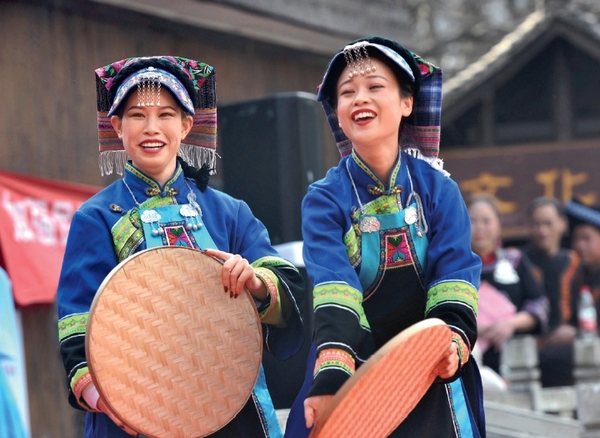
Through the Bouyei people's traditional costumes, one may get a glimpse of the ethnic group's unique customs. The Bouyei women usually offer their self-made clothes, handkerchiefs and/or shoes to men to whom they desire, as tokens of their affection. Unmarried Bouyei women usually braid their hair. After she gets married, a Bouyei woman customarily lives in her parents' house for some time. On a selected day between August (or September) of the year, in which the woman gets married, and April of the following year, the bridegroom's family sends two women to the bride's parents' house, to untie the bride's braids. Then, the bride wears a hat made from bamboo shoot shell and cyan cloth. After that, the newly weds live with the braidegroom's parents. The change of a Bouyei woman's hairstyle and clothing marks the beginning of her marital life.
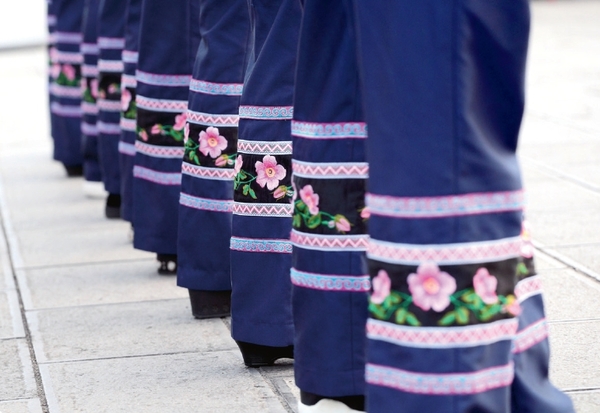
The Bouyei people's clothing consists of daily wear and festive costumes. The people wear traditional costumes during grand festivals, such as the New Year and the Double-Third Festival (the third day of the third lunar month). Bouyei women's refined costumes are decorated with various exquisite, embroidered patterns. A complete traditional Bouyei woman's outfit, with exquisite, colorful embroidered patterns, consists of a headscarf, a top, a shirt, a pant, a skirt, a waist belt and a pair of floral shoes. Some Bouyei women wear gold or silver jewelry.
Through a long history of development, the Bouyei ethnic group has developed a unique costume culture. Bouyei women have inherited the traditional costume-making craft, which consists of various handmade procedures (including spinning, weaving, dyeing and tailoring).
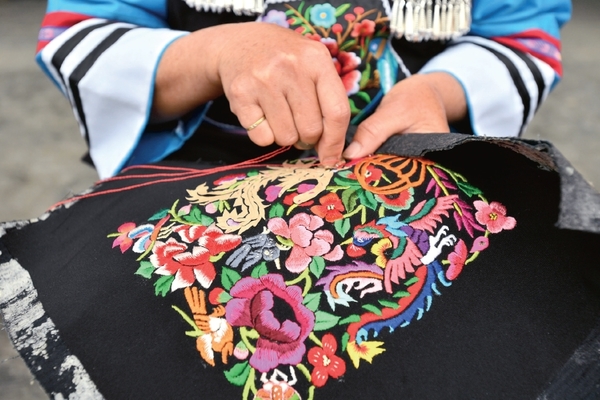
The Bouyei people usually dye fabrics into five colors. They usually use purple grass to make purple dye, and blue indigo and wild grass to make black dye. The people also use blue indigo to stain blue and cyan on fabrics, and make brown dye by boiling tree barks or Calligonum in pots. Dyed fabrics have more than 200 patterns, including lattices, stripes, plum blossoms and fish bones.
During the dyeing process, Bouyei women often use batiks and tie dyeing crafts. The women can draw various patterns on cloth with wax knives. Then, the women go through several procedures, such as waxing, dyeing, dewaxing and cleaning. As a result, the plain-colored cloth is transformed into a bright-colored fabric artwork.
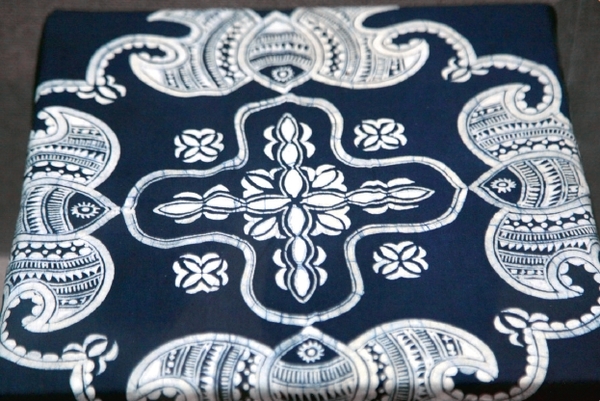
Tie dyeing is an ancient, commonly used craft. During the procedure, white cloth is immersed into the dye, while the tied parts of the cloth are unstained by the dye. Therefore, the parts, which retain their original color, form patterns in strong contrast to those of other parts (of the cloth). Both tie-dye and batik are popular crafts in the Bouyei people's costume-making culture.
To make a complete Bouyei woman's outfit, the women have to use various crafts, such as batik, tie dyeing, stitching and embroidery. Embroidery is a commonly used craft for making decorations on skirts and on clothes' collars, cuffs and shoulders. The Bouyei people like to embroider bright patterns on their aprons, and the various parts (of their clothes), including sleeves and lapels. Small items, such as handkerchiefs and pouches, are also decorated with colorful patterns. The various patterns (including osmanthus, lotus and plum flowers, rice, magpies, butterflies, cattle and fish), on the Bouyei people's costumes, are often found in their daily lives. The patterns symbolize the worship of nature and the prosperity of the people. In addition, abstract patterns, based on geometric figures, are also commonly used by Bouyei women in garment making.
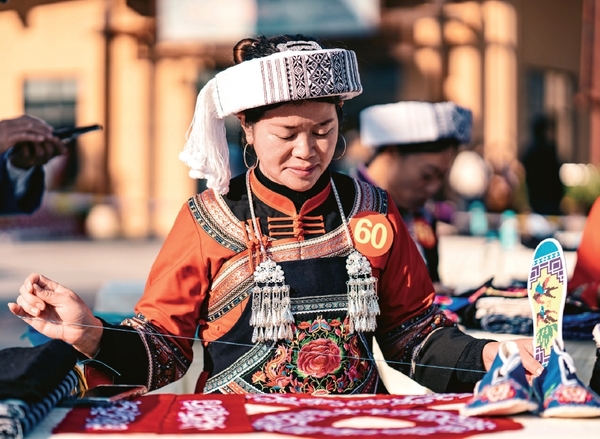
The Bouyei people's costume culture, which embodies the ethnic group's traditional cultural elements, advocates a primitive, simple aesthetic style. The people's costume-making craft, which crystallizes the ethnic group's ancient culture and the people's wisdom, is a treasure of the Chinese costume culture.
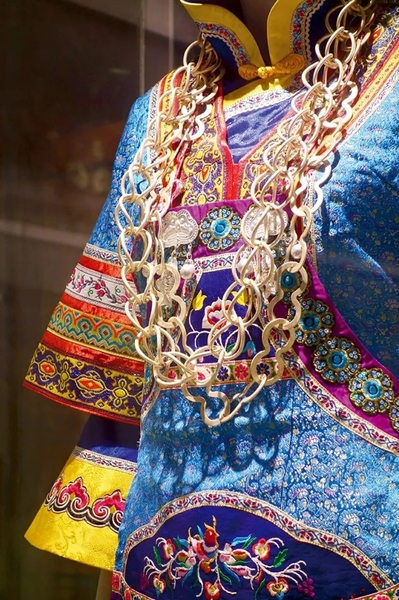
Photos from VCG and Tuchong
(Source: China Today/Women of China)
Please understand that womenofchina.cn,a non-profit, information-communication website, cannot reach every writer before using articles and images. For copyright issues, please contact us by emailing: website@womenofchina.cn. The articles published and opinions expressed on this website represent the opinions of writers and are not necessarily shared by womenofchina.cn.?


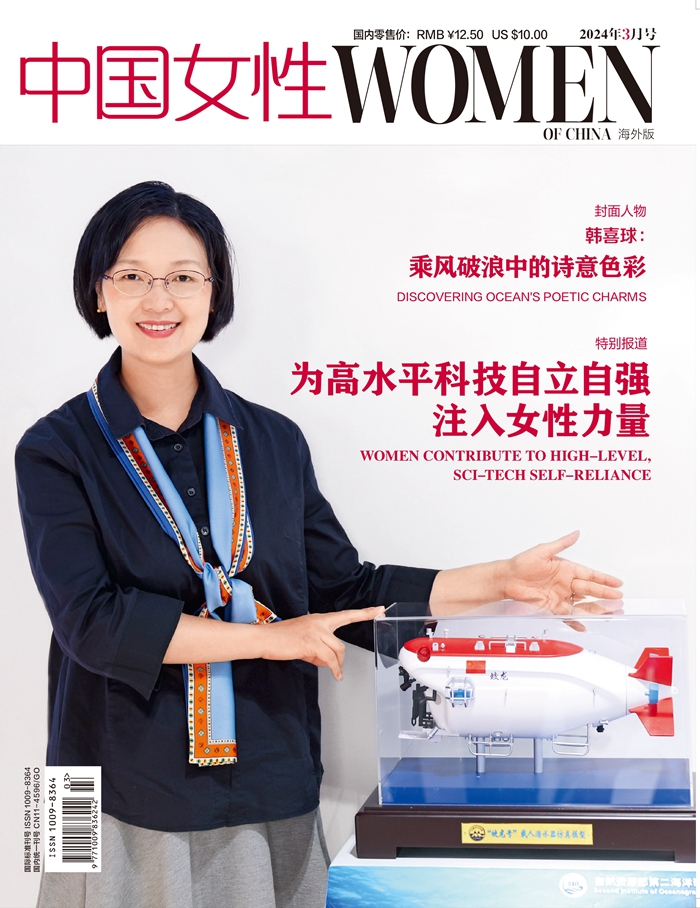

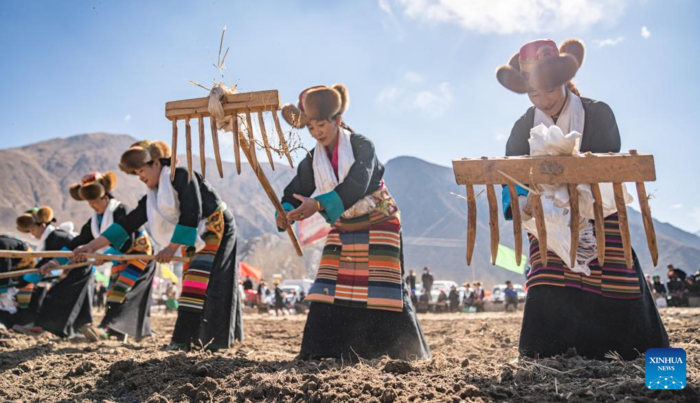



 WeChat
WeChat Weibo
Weibo 京公綱安備 11010102004314號
京公綱安備 11010102004314號